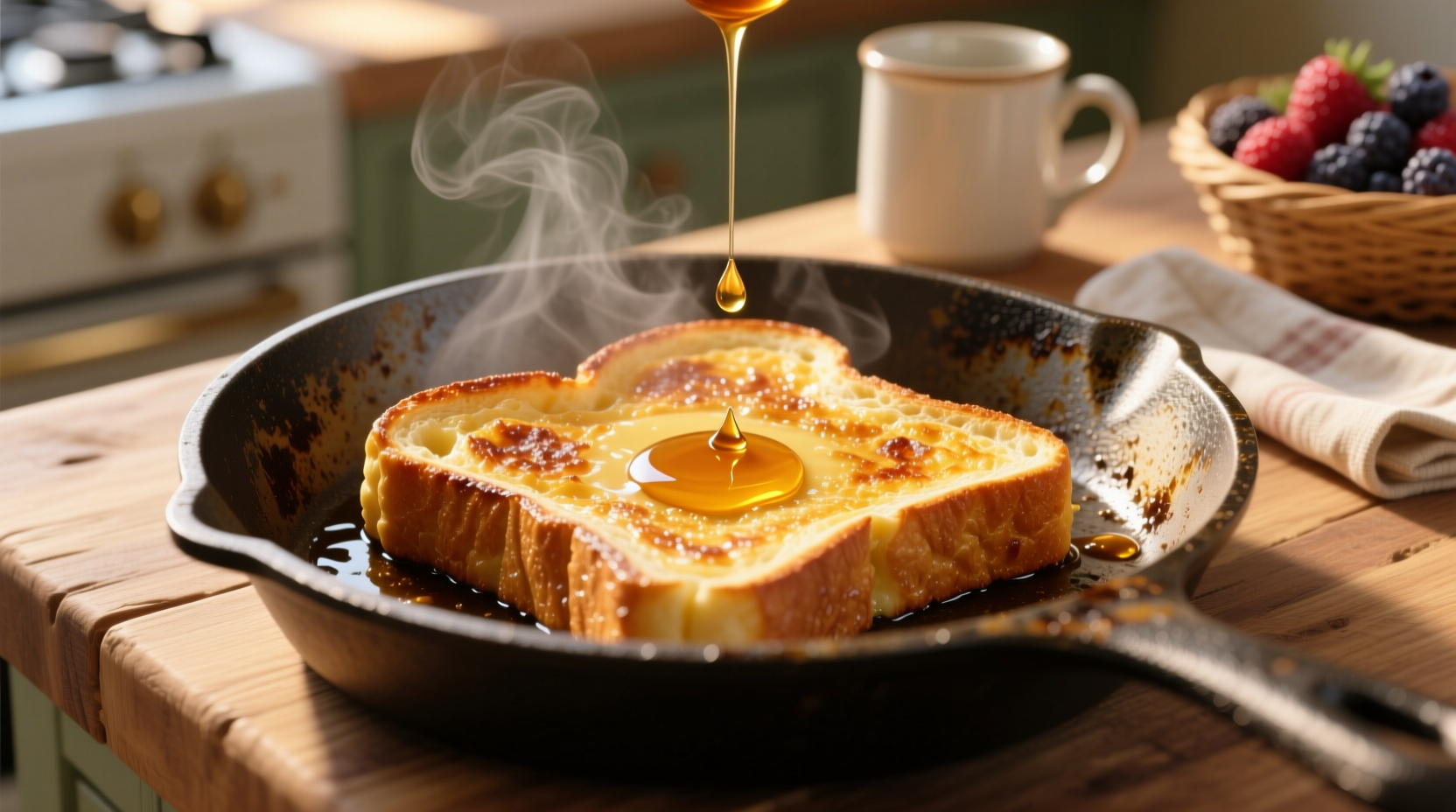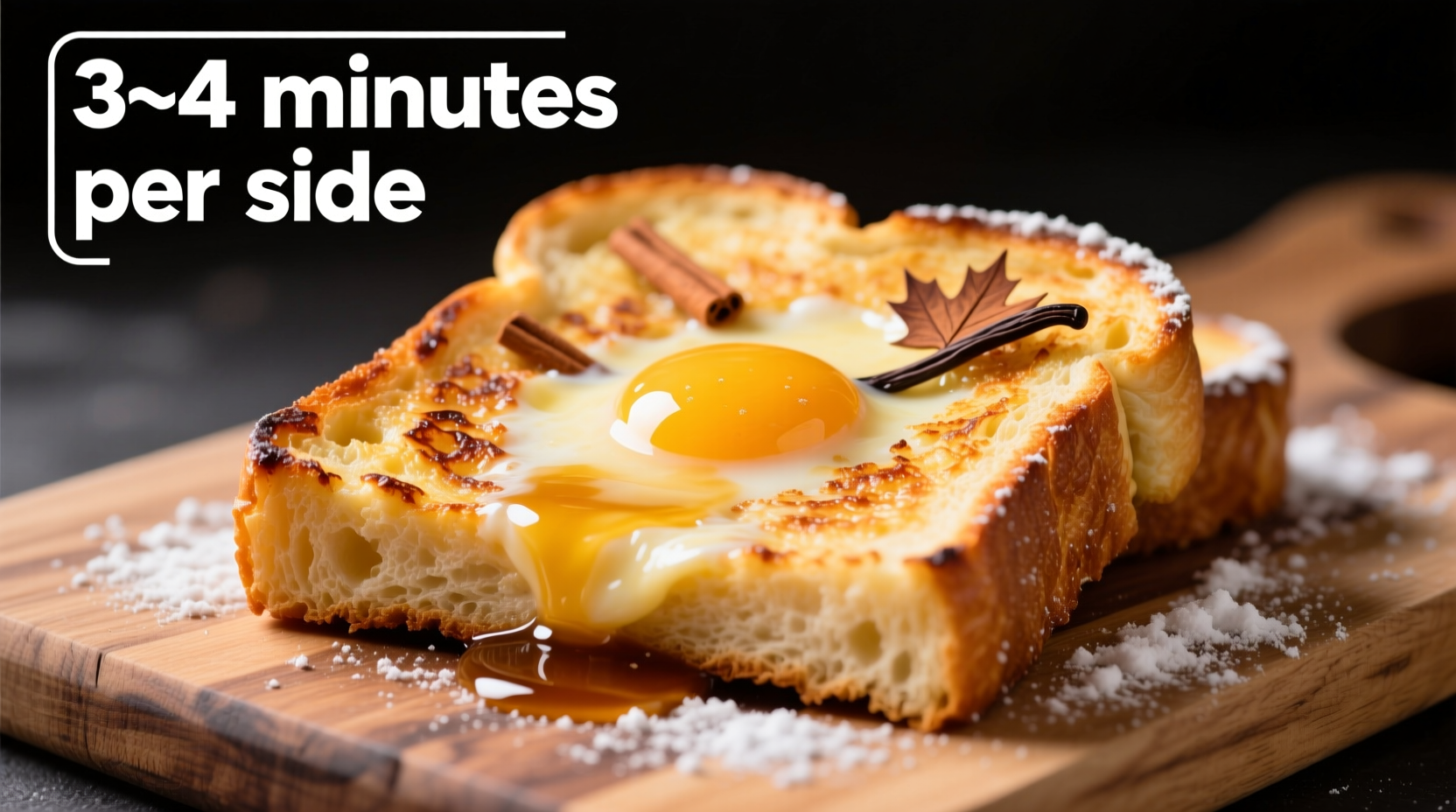
The Science Behind French Toast Cooking Time
Getting French toast timing right separates good from great results. Cook too briefly and you'll end up with soggy, undercooked centers. Overdo it and you'll face burnt exteriors with dry interiors. The sweet spot? That magical 3-4 minute window per side when using standard white or brioche bread at 350°F (175°C).
Why Timing Varies: Key Factors You Must Consider
While "how long to cook French toast" seems straightforward, multiple variables affect the perfect cooking duration. Understanding these helps you adapt rather than follow rigid timing:
| Bread Type | Thickness | Recommended Cooking Time | Special Considerations |
|---|---|---|---|
| White Bread | 1 inch | 3-4 minutes per side | Most forgiving for beginners |
| Brioche | 1 inch | 3.5-4.5 minutes per side | Higher sugar content browns faster |
| Sourdough | 1 inch | 4-5 minutes per side | Denser texture requires longer cooking |
| Whole Wheat | 1 inch | 3.5-4 minutes per side | Check for doneness earlier to prevent burning |
Temperature Matters: The Critical Heat Range
According to the USDA Food Safety and Inspection Service, egg-based dishes like French toast must reach an internal temperature of 160°F (71°C) to be safe. This explains why timing alone isn't sufficient - you need proper heat management:
- Too hot (above 375°F/190°C): Exterior burns before interior cooks
- Too cool (below 325°F/163°C): Absorbs excess oil, becomes greasy
- Ideal range (350°F/175°C): Perfect golden crust with fully cooked center
Your Visual Timing Guide: What to Watch For
Professional chefs at the Culinary Institute of America emphasize visual cues over strict timing. Here's what happens during the cooking process:
- 0-60 seconds: Egg mixture sizzles immediately on contact
- 1-2 minutes: Edges begin to set, surface turns opaque
- 2-3 minutes: Golden brown color develops at edges
- 3-4 minutes: Deep golden brown color across surface, springy to touch
- 4+ minutes: Risk of burning, especially with high-sugar breads
Common Timing Mistakes and How to Fix Them
Even experienced cooks face timing challenges. Here's how to troubleshoot:
Problem: Soggy Center Despite Proper Timing
Solution: Your egg mixture likely contained too much milk. Next time, use a 2:1 egg-to-milk ratio and let bread soak just 20-30 seconds per side. For current batch, return to griddle for 1-2 additional minutes on low heat.
Problem: Burnt Exterior Before Center Cooks
Solution: Lower heat immediately and cover with lid to trap heat. Cook 1-2 additional minutes to finish cooking interior without further browning. Next time, preheat pan to proper medium heat (350°F).
Advanced Timing Techniques for Perfect Results
For consistent results across multiple batches, follow these professional timing methods:
- The Double-Flip Method: Flip once at 2 minutes, then again at 3 minutes for even cooking
- Oven Finishing: After initial sear, transfer to 200°F (95°C) oven for 5 minutes to finish cooking without additional browning
- Batch Cooking Timing: Keep cooked slices warm in oven while maintaining 200°F (95°C) - never above 250°F to prevent continued cooking
Special Dietary Considerations
Different recipes require timing adjustments. The Academy of Nutrition and Dietetics notes that alternative ingredients change thermal conductivity:
- Gluten-free bread: Cook 30 seconds less per side (more fragile, browns faster)
- Vegan French toast: Add 30-60 seconds per side (lacks egg proteins that set quickly)
- Thin-sliced bread: Reduce to 2-2.5 minutes per side to prevent drying out
Mastering French Toast Timing: Final Tips
Remember that perfect French toast timing combines science and observation. Always:
- Preheat your cooking surface properly before adding soaked bread
- Test with one slice first to calibrate your specific equipment
- Listen for the sizzle - it should be immediate but not violent
- Use a timer but trust visual cues more than the clock
- Let cooked slices rest 1-2 minutes before serving for optimal texture











 浙公网安备
33010002000092号
浙公网安备
33010002000092号 浙B2-20120091-4
浙B2-20120091-4